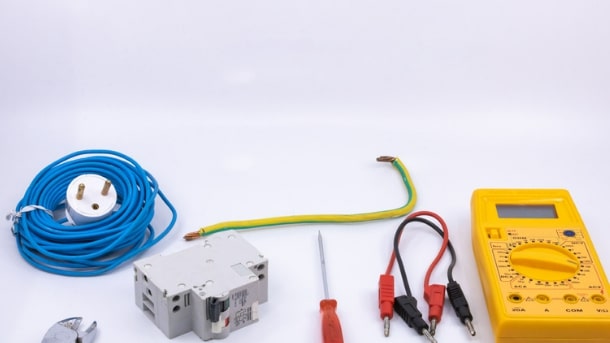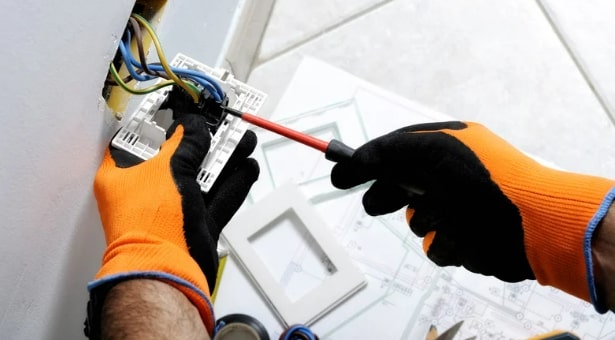Often seen as sanctuaries of safety and comfort, our homes can harbour potential dangers for the family’s youngest members. As parents, guardians, or caregivers, one of our primary responsibilities is to ensure that every corner of our homes is safe for our children to explore, learn, and grow. Electrical outlets are one overlooked but significant area of focus in this quest for safety.
As we delve further into this topic, we aim to provide you with insights, tips, and actionable steps from house electricians to ensure the electrical fixtures in your home are childproof.
Electrocutions and Electrical Burn Statistics
The Ontario Electrical Safety 2021 Report indicates that in 2012-2021, 53 electrical-related fatalities were reported, showing a slight increase from the previous decade. The 20-39 age group had the highest fatalities at 47%, followed by the 40-59 age group at 32%. Most incidents happened between June and October (63%), peaking in August (21%).
Though the general rate of electrical fatalities dipped by 3% between the two five-year spans (2012-2016 vs. 2017-2021), powerline electrocutions saw a 25% increase. Most fatalities between 2017 and 2021 occurred in residential (33%), utility (19%), and commercial (11%) areas. Occupational electrical-related fatalities dropped 47% over the decade, while non-occupational fatalities rose 83%.

Why Childproof Electrical Outlets?
Every parent has, at some point, witnessed the insatiable curiosity of a toddler. While a sign of healthy development, this innate curiosity can lead them to explore places and things that adults could not even glance at.
Electrical outlets, positioned just at the right height for crawling babies and toddlers, fall squarely into this category. This is why these seemingly harmless fixtures can cause concern:
- Natural Curiosity: For a child, the slots in an outlet can seem like an intriguing puzzle, inviting them to insert objects, be it their fingers or toys, into them.
- Severe Consequences: Contact with an active electrical outlet can lead to shocks, burns, and in the worst cases, long-term injuries or fatalities.
- Ubiquity of Outlets: Outlets are everywhere, from bedrooms to kitchens. They are easily accessible to wandering little hands.
Understanding the Risks
Electrical burns result from electric current passing through the body, differing from more common burns. When someone comes into direct contact with electricity, it can cause damage to the skin, tissue, and major organs.
- Dangers:
- Skin Burns: These manifest externally at the contact points where the electricity enters and exits the body.
- Internal Damage: Electricity can damage internal tissues, blood vessels, and nerves.
- Arrhythmia: The heart is particularly susceptible. Electric shocks can disrupt its rhythm, potentially causing cardiac arrest.
- First Aid:
- Disconnect the Source: Ensure the electricity source is turned off before approaching the injured.
- Do Not Touch: If the person is still in contact with the electrical source, do NOT touch them directly. Use a non-conductive material, like wood, to separate them from the source.
- Call for Help: Dial emergency services immediately.
- CPR: If the person isn’t breathing, administer CPR.
Electrical Shocks
Understanding electrical shocks’ severity, recognizing symptoms, and knowing the right course of action can make a significant difference.
| Severity | Symptoms | Immediate Actions |
| Minor | Tingling sensation, minor burns. | Disconnect power; monitor victim. |
| Moderate | Pain, muscle contractions, burns. | Call 911; start first aid. |
| Severe | Unconsciousness, severe burns, breathing difficulties. | Call 911; CPR if necessary. |
Long-term Effects of Electric Shocks on Children:
- Neurological Damage: This could manifest as changes in behaviour, memory issues, or sleeping problems.
- Cardiac Issues: Arrhythmias or other heart problems could develop or persist after the initial shock.
- Muscle and Tissue Damage: Muscles could weaken or become stiff. Scars from burns can also limit mobility.
- Psychological Trauma: Children will fear electrical appliances or outlets. They could also experience anxiety or PTSD.
Types of Childproof Outlet Covers
Childproofing outlets is a paramount step in ensuring a safe environment for your little ones. One effective method to achieve this is by installing outlet covers. Browse through this curated list to discover a range of protective solutions suitable for your home’s outlets:
Plastic Plug-in Caps:
These simple plastic covers fit directly into the socket holes.
| Pros | Cons |
| Cheap and readily available. | Can be challenging for adults to remove. |
| Generally effective in deterring toddler interaction. | Small parts can be a choking hazard if removed by older kids. |
Installation Guide:
- Clean the outlet to ensure it’s free from dust or debris.
- Simply plug the plastic cap into the socket like any standard plug.
- Ensure the cap is flush against the outlet, with no gaps.
Sliding Outlet Covers
When removing an appliance plug, a spring-loaded slider automatically covers the socket holes, preventing direct access.
Advantages over Traditional Plug-in Caps:
- More aesthetically pleasing as they seamlessly integrate with the outlet.
- No small parts that can be removed or become a choking hazard.
- More challenging for children to bypass as it requires simultaneous pressure and sliding, a complex motion for toddlers.
Box Outlet Covers
These protective boxes encase the entire outlet, ensuring plugs remain inaccessible to children.
| Uses | Advantages |
| Ideal for outlets with appliances that are always plugged in, like fridges or TVs. | Offers a higher level of protection than plug-in or sliding covers. |
| Large size ensures they can’t be ingested or choked on. | |
| Can accommodate bulkier plugs or multiple cords. |
Self-closing Outlet Covers
Mechanism:
Designed with built-in spring-loaded plates, these plates automatically slide over the socket holes when a plug is removed.
Benefits:
- Offers dual functionality: serves as both an outlet cover and a plate.
- Installation is as simple as replacing the existing outlet plate.
- No removable parts, minimizing choking hazards.
- Children find manipulation extremely difficult due to its intuitive self-closing design.
Installation Tips
Ensuring a secure setup of childproof equipment for your outlets is imperative, as improper installation could negate its safety purpose. Follow these steps for a precise and professional installation:
Tools Required:
- Screwdrivers (flat-head and Phillips-head).
- Outlet tester (optional).
- Cleaning cloth.
Installation for Various Types:
- Plastic Plug-in Caps:
- Clean the outlet.
- Insert the cap into the socket.
- Sliding Outlet Covers:
- Turn off power from the circuit breaker.
- Replace the existing plate with the sliding cover.
- Test its sliding mechanism.
- Box Outlet Covers:
- Position over the outlet.
- Secure, either by snapping or screws.
- Self-closing Outlet Covers:
- Turn off power.
- Replace the current plate with the self-closing one.
- Test the mechanism.
Ensuring a Snug Fit:
- Test the cover’s stability post-installation.
- Ensure no gaps or spaces are present.
- Check for the smooth operation of any mechanisms.
Safety Precautions:
- Always turn off the power during installation.
- Keep tools out of children’s reach.
- For doubts, consider professional help or manufacturer guidance.
- Periodically inspect installed outlets for security and function.
Alternative Safety Measures
Beyond outlet covers, there are various measures you can adopt to ensure the highest degree of safety for your children. Explore the following alternative strategies to create a more secure environment at home:
| Safety Measure | Description | Benefits/Usage |
| Tamper-resistant Receptacles (TRRs) | Spring-loaded shutters close off contacts. Shutters open only when both are compressed simultaneously, as with a plug insertion. | Permanent safety solution; reduces tampering risks. |
| Ground-fault Circuit Interrupters (GFCIs) | Monitors electricity in a circuit. Cuts off power if there’s an imbalance, indicating a ground fault. | Prevents shocks; ideal for damp locations, outdoors, and pool areas. |
| Rearranging Furniture | Moving furniture or other items in front of outlets to prevent access. | Non-technical; especially useful for rarely used outlets. |
| Educating Children | Teaching children the dangers of outlets, the role of electricity, and instructing them not to insert objects or touch outlets. | Builds awareness and understanding, promoting long-term safety. |
Regular Maintenance and Checks
Through regular inspections and diligent maintenance, your childproof equipment will not only fulfill its safety objectives but also operate efficiently at all times.
| Aspect | Guidance |
| Checking Childproof Devices | Monthly checks recommended; more often for high-use areas. |
| Wear and Tear | Inspect for cracks or loose parts in outlet covers; replace if damaged. |
| Cords Out of Reach | Keep cords tucked away, use cord organizers. |
| Avoid Overloading | Limit use of multi-plug extensions; overloading can be a hazard. |
Prioritize Your Child’s Electrical Safety
Electricians are not just skilled tradespeople; they are a frontline defence in ensuring the safety of our homes, especially for our youngest members. The intricacies of electrical systems require expertise, and their role becomes even more significant when it comes to childproofing.
Understanding the potential hazards and taking proactive steps to mitigate them is paramount for parents and caregivers. Electrical safety isn’t just about preventing accidents today; it’s about safeguarding our future and ensuring a secure environment for children to grow and explore.
Let’s not wait for accidents to dictate our actions. Call our skilled house electricians in Mountain Point Elecrtical Inc. and prioritize electrical safety today. Together we can make our homes a safe haven for our children.
Frequently Asked Questions
When should one start childproofing outlets?
One should start childproofing outlets as soon as a baby shows signs of mobility. This can be as early as a few months old when they start rolling over or crawling. It’s essential to be proactive since babies are naturally curious and often explore their surroundings by touching or grabbing objects, including electrical outlets. To ensure maximum safety, childproof outlets before your baby becomes mobile.
How often should childproofing devices be replaced?
Childproofing devices should be inspected monthly. They should be replaced immediately if they show signs of wear, damage, or no longer fit securely.
But, any time there’s a significant change in the home environment, such as a renovation, it’s a good idea to re-evaluate and possibly update the devices to ensure optimal safety.
Are childproofing devices a substitute for supervision?
No, childproofing devices are not a substitute for supervision. They are an added layer of protection to help prevent accidents, but active and attentive supervision is essential. Children are naturally curious, and even with precautions in place, there’s no replacement for the watchful eye of a caregiver or parent. Always supervise your children, especially in areas with potential hazards, regardless of the safety devices in place.


